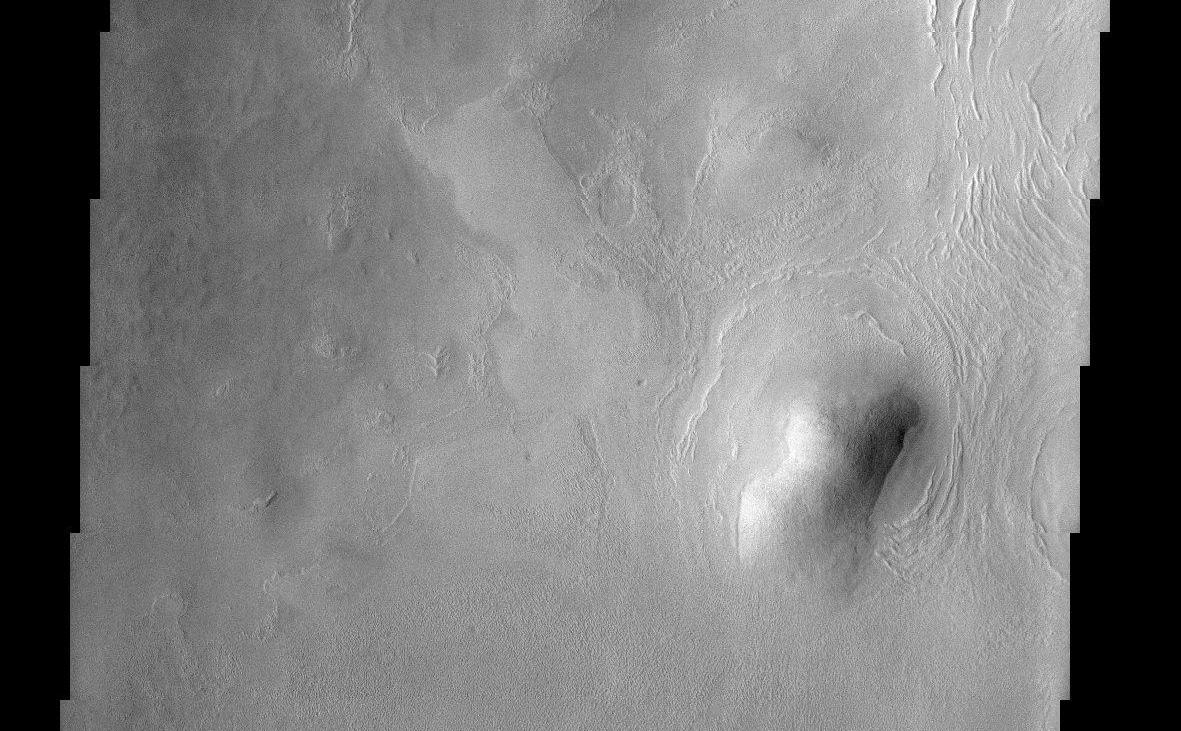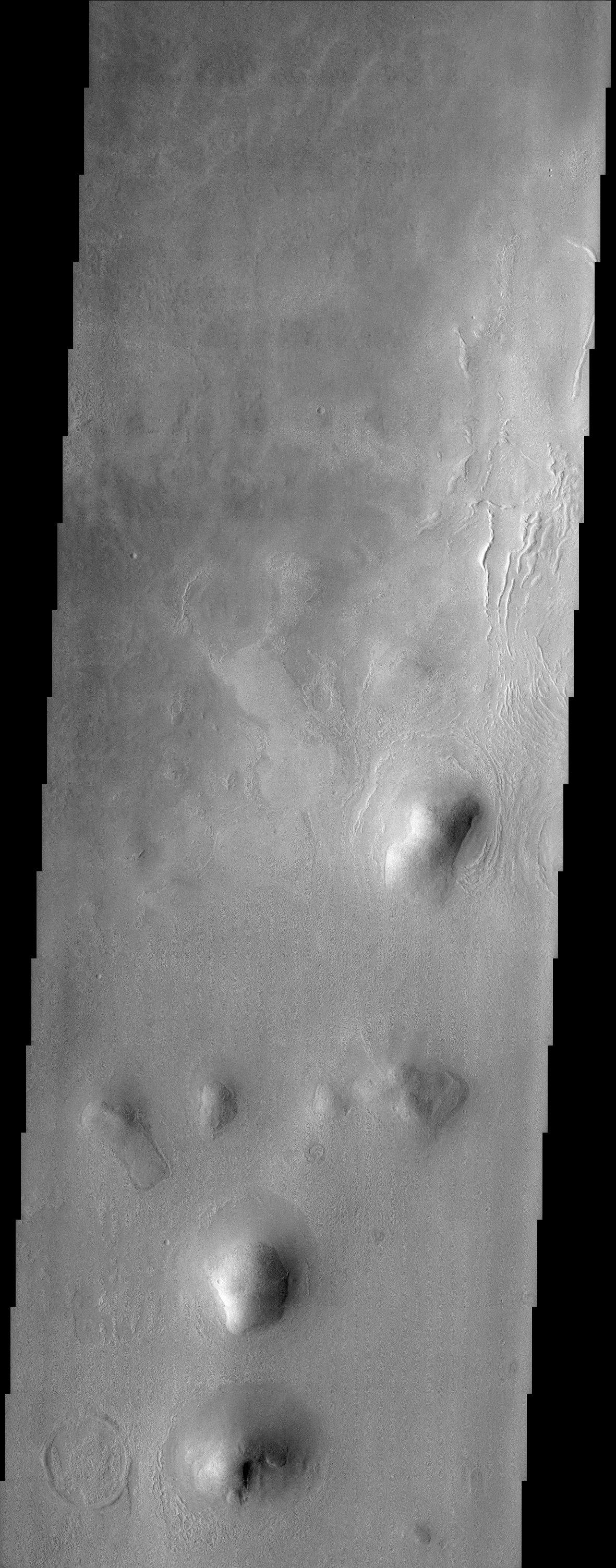Arcadia Planitia

| Credit | NASA/JPL-Caltech |
|---|---|
| Language |
|
This THEMIS image of rounded hills and ridges in Arcadia Planitia shows a very intriguing geomorphic feature that may be attributed to the presence of an icy-rock mixture of material. Smooth aprons of material are observed to be preferentially located on the cold, north facing slopes of hills and extend further and beyond the deposits located on other sides. These smooth deposits are in stark contrast to the more rough surfaces that dominate the scene and it has been suggested that they represent a preserved mixture of ice and rock. How exactly this deposit forms still remains a mystery. They may have been "pasted" onto the slopes and preserved on the cold facing sides or they may represent the result of downslope motion of material that is enhanced by the presence of ground ice. In either case, this interesting observation suggests that ground ice may still play an important role in the formation and preservation of martian surface features.

